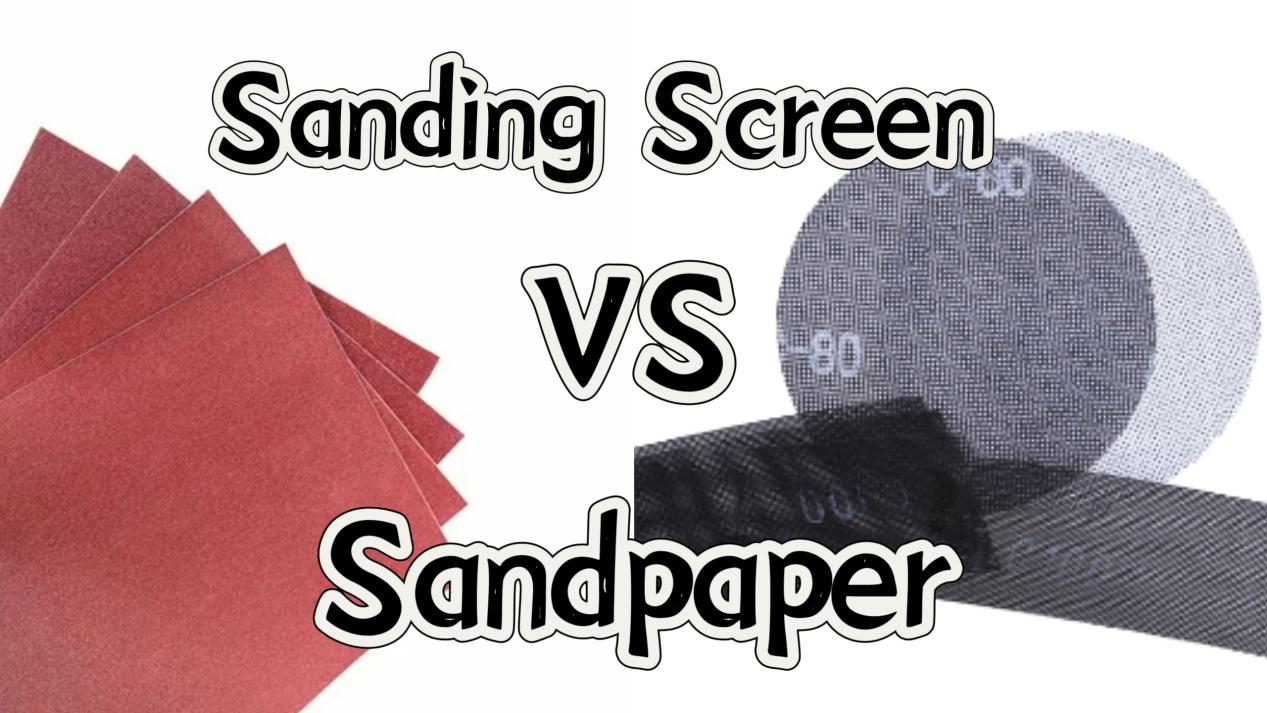The world of woodworking and home improvement is a vast expanse, filled with a myriad of tools and materials designed to transform raw materials into refined masterpieces. Among the essential tools in this realm are sanding materials, with sanding screens and sandpapers being two popular choices. While both serve the same fundamental purpose of smoothing surfaces, understanding their differences is crucial for achieving optimal results in various projects.
The Basics of Sanding:
Before delving into the distinctions between sanding screens and sandpapers, it’s essential to understand the basic principles of sanding. Sanding is a vital step in the woodworking and finishing process, aimed at removing imperfections, refining surfaces, and preparing them for painting, staining, or varnishing. The abrasive materials used in sanding help to level surfaces, remove old finishes, and create a smooth foundation for subsequent treatments.
Sanding Screen: The Modern Mesh Marvel
Sanding screens are a relatively modern addition to the sanding toolkit. Unlike traditional sandpapers, which use a coated paper or fabric backing, sanding screens employ an open mesh design made from synthetic materials. This design offers several advantages:
- Durability:
Sanding screens are known for their durability, as the open mesh structure allows for efficient dust extraction. This characteristic prevents clogging, ensuring a longer lifespan compared to conventional sandpapers.
- Consistent Abrasion:
The uniform mesh pattern of sanding screens provides consistent abrasion across the entire surface. This results in an even finish without the risk of creating gouges or uneven spots, making them ideal for large, flat surfaces.
- Efficient Dust Extraction:
The open structure of sanding screens allows dust to be easily extracted during the sanding process. This not only keeps the work area cleaner but also prevents the abrasive material from becoming clogged, maintaining its effectiveness.
- Versatility:
Sanding screens are versatile and can be used for both dry and wet sanding applications. They are suitable for various surfaces, including drywall, plaster, wood, and metal, making them a go-to choice for professionals and DIY enthusiasts alike.
Sandpaper: The Time-Tested Classic
Sandpaper, the traditional workhorse of the sanding world, is composed of abrasive particles bonded to a paper or fabric backing. The grit size, measured in terms of coarseness or fineness, determines the aggressiveness of the sandpaper. Here are some key characteristics of sandpaper:
- Grit Variability:
Sandpapers come in a wide range of grit sizes, from coarse to fine. This variability allows craftsmen to choose the appropriate sandpaper grit for different stages of the sanding process, from rough material removal to fine finishing.
- Flexibility:
Sandpapers are available in various backings, including paper and cloth, offering flexibility for different applications. The flexibility of sandpaper makes it suitable for contour sanding and reaching into tight spaces.
- Traditional Backing:
The traditional paper or cloth backing of sandpaper, while not as resistant to wear as the mesh structure of sanding screens, remains a reliable choice. Advances in technology have led to the development of sturdier backings, enhancing the durability of modern sandpapers.
- Proven Performance:
Sandpapers have a long-standing history of performance in woodworking and finishing applications. Craftsmen appreciate their versatility and the ability to achieve precise results, especially in intricate or detailed work.
Choosing Between Sanding Screen and Sandpaper:
When deciding between sanding screens and sandpapers, several factors come into play, depending on the specific requirements of the project:
- Surface Type:
Sanding screens are excellent for large, flat surfaces, thanks to their consistent abrasion and efficient dust extraction. On the other hand, sandpaper’s flexibility makes it suitable for curved or contoured surfaces.
- Material Compatibility:
Consider the material you are working on. Sanding screens are versatile and compatible with various materials, while sandpaper offers different abrasive options for specific material requirements.
- Project Scale:
For extensive projects with significant surface areas, sanding screens might be more efficient due to their durability and even abrasion. For smaller, detailed projects, sandpaper’s flexibility and grit variability offer more precision.
- Dust Management:
If dust management is a priority, sanding screens with their open mesh structure are a superior choice. They facilitate efficient dust extraction, contributing to a cleaner work environment.
Conclusion:
In the realm of woodworking and finishing, the choice between sanding screen and sandpaper is not a matter of one being superior to the other; rather, it’s about selecting the right tool for the specific job at hand. Sanding screens excel in efficiency and durability, particularly on large, flat surfaces, while sandpaper remains a versatile classic, ideal for intricate detailing and varied material compatibility.
Understanding the differences between these two sanding tools empowers craftsmen to make informed decisions, ensuring that each project receives the attention and precision it deserves. Whether you opt for the modern mesh marvel of sanding screens or the time-tested classic of sandpaper, the artistry of woodworking and finishing is bound to flourish with the right choice in hand.


